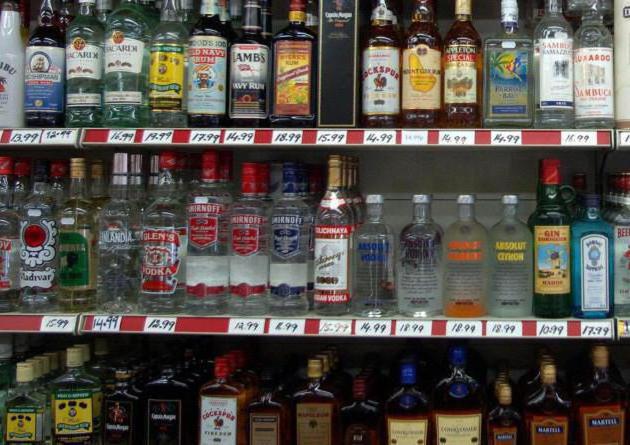Companies involved in foreign trade transactions are required to pay excise taxes for the movement of goods across the border of the Russian Federation. This fee is indirect. The amount of tax accrued at the border increases the final cost of the goods, as a result, the final consumer becomes a taxpayer.
The economic feasibility of excise duty

In simple terms, excise tax covers products that require certain control from the state. The most demanded goods are taxed, the demand for which is not reduced even in case of price increase. Excise tax can be called a penalty tax, which is introduced to reduce the purchasing power of harmful goods.
Another role of excise tax is that with its help the state redistributes the excess profits of companies to the country's budget, and also protects its own producer from the dominance of imported goods.
Harmful tax

By introducing an excise tax on certain types of goods, the state is trying to focus consumer attention on the fact that these products are impractical and harmful to the population. In the event of negative consequences, the state will be forced to spend certain funds on solving the problem associated with the emergence of harmful dependence on such goods.
The goods that cause indirect and real harm to health and the environment include alcoholic beverages, tobacco products, automobile manufacturing and the processing of oil and gas raw materials. The health of citizens is their responsibility, therefore, state structures do not have the right to intervene in this problem directly. In this regard, increasing the price of harmful goods reduces purchasing power, the excise tax on alcohol fights alcoholism, the excise tax on petroleum products reduces harmful emissions into the environment, and the tax on tobacco products causes the population to quit smoking. At least that is the idea.
Excise tax rate

For each product, the excise tax has individual rates that apply throughout the Russian Federation. Depending on the accrual mechanism, the excise tax rate can be divided into several groups:
- Specific - has a fixed amount for a certain type of product.
- Avalorna - accrued as a percentage of the total cost. This type is used to tax expensive items (gold, cars, jewelry).
- Combined - combines the two previous types. It is used to tax certain types of products for the purpose of special control over imports.
The excise tax on alcohol is calculated on one liter of ethyl alcohol contained in the product. In other words, the less alcohol in the drink, the lower the excise tax. Some alcohol products may be tax deductible. For example, drugs containing alcohol in small doses, various veterinary drugs and cosmetic products.
In the automotive industry, the unit of account is engine power of one horsepower. When importing cars, the state provides for three types of rates. Depending on the qualitative characteristics of gasoline, 2 levels of charges are applied.
It is worth noting that the excise tax is monthly, so it is very important to consider the date of each taxable transaction separately. The procedure for determining such terms is spelled out in the Tax Code of the Russian Federation (Article 195).
Excise Tax Accounting Rules

The issue of excise tax accounting is of interest only to those companies that are directly involved in the production of which goods. Russian legislation establishes a special reporting form for such accruals. The excise tax declaration shall be provided at the place of registration of the organization no later than the 25th day of the month following the expired period.
Excise tax can be paid in two stages. The first part of the amount is paid no later than the 25th day of the next month, and the final payment is made before the 15th day of the second month. For petroleum products and denatured alcohol, a deferred payment is permitted until the 25th day of the third month.
Tax deduction for excise taxes

Many companies acquire excisable goods to processing. In this case, the excise tax that was paid at the time of the acquisition of products is not taken into account in a separate line in accounting. Such an additional expense is fully added to the book value of the goods.
According to the principle of calculating VAT, excise tax is mutually deductible. In other words, a company engaged in the production of excisable goods and acquiring such goods for the implementation of business processes has the right to deduct the paid excise tax from the amount of taxes received from the final consumer. When selling excisable goods abroad, the manufacturer has the right to return the excise tax paid to his suppliers.
Accounting of excise taxes is carried out by companies on the basis of VAT, the accrued amounts are reflected in subaccounts of account 68 “Calculations of taxes and fees”. All tax deductions are made on the basis of primary documents and issued invoices, as well as in the presence of a declaration confirming the import of excisable goods.
What is an excise stamp for?
Confirmation that the tax has been paid is a special excise stamp, which is affixed to the packaging of the goods. In other words, tax transfer is a purchase of excise labels from the state.
With the help of special marking, additional control over the payment of such a fee is carried out, and the amount of incoming counterfeit products to the domestic market is reduced. This is especially important for a product that passes through many intermediary companies.
Excise duty is an important part of the tax system, since such payments replenish the state budget and automatically control the harmful effects of certain goods on the population and the environment. This tax system is adopted in most countries that care about the health of the nation.








